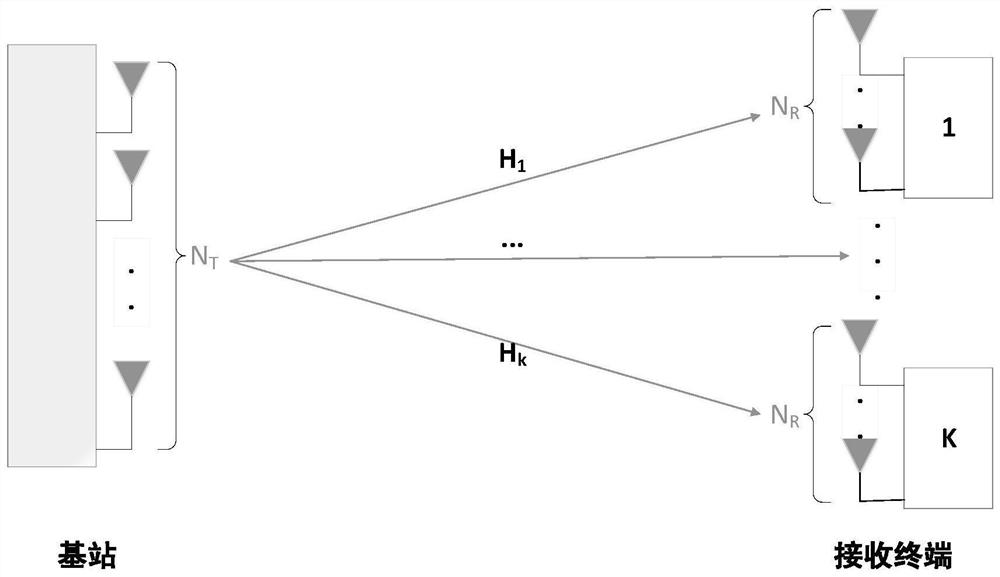A Channel Information Feedback Algorithm for FDD Large-Scale MIMO-OFDM System
A MIMO-OFDM, channel information feedback technology, applied in transmission systems, radio transmission systems, diversity/multi-antenna systems, etc., can solve problems such as increase, delay difference, and reduce system capacity, to overcome CSI outdated, reduce The amount of feedback and the effect of ensuring accuracy
- Summary
- Abstract
- Description
- Claims
- Application Information
AI Technical Summary
Problems solved by technology
Method used
Image
Examples
specific Embodiment approach
[0046] Assume that in the massive MIMO-OFDM system, the channel is a flat fading channel, and the base station is configured with N tAntennas, transmit data to K single-antenna users simultaneously on N subcarriers. with X T Denotes the conjugate transpose of matrix X, X H Represents the complex conjugate transpose of matrix X. x -1 Represents the inverse of matrix X. [] i Represents the i-th element of the vector, and diag() represents a diagonal matrix. Specific implementation method: combined figure 1 Describe this embodiment, the steps of this embodiment are as follows:
[0047] Step 1: At the receiving end, use classical channel estimation algorithms (such as LS, MMSE, etc.) to perform frequency-domain channel estimation to obtain frequency-domain CSI information H, expressed as:
[0048] H={H[0],..,H[N t -1]}, (1)
[0049] in Indicates the antenna n t Corresponding to the frequency domain channel on N subcarriers, means N t The root antenna corresponds to...
PUM
 Login to View More
Login to View More Abstract
Description
Claims
Application Information
 Login to View More
Login to View More - R&D
- Intellectual Property
- Life Sciences
- Materials
- Tech Scout
- Unparalleled Data Quality
- Higher Quality Content
- 60% Fewer Hallucinations
Browse by: Latest US Patents, China's latest patents, Technical Efficacy Thesaurus, Application Domain, Technology Topic, Popular Technical Reports.
© 2025 PatSnap. All rights reserved.Legal|Privacy policy|Modern Slavery Act Transparency Statement|Sitemap|About US| Contact US: help@patsnap.com



